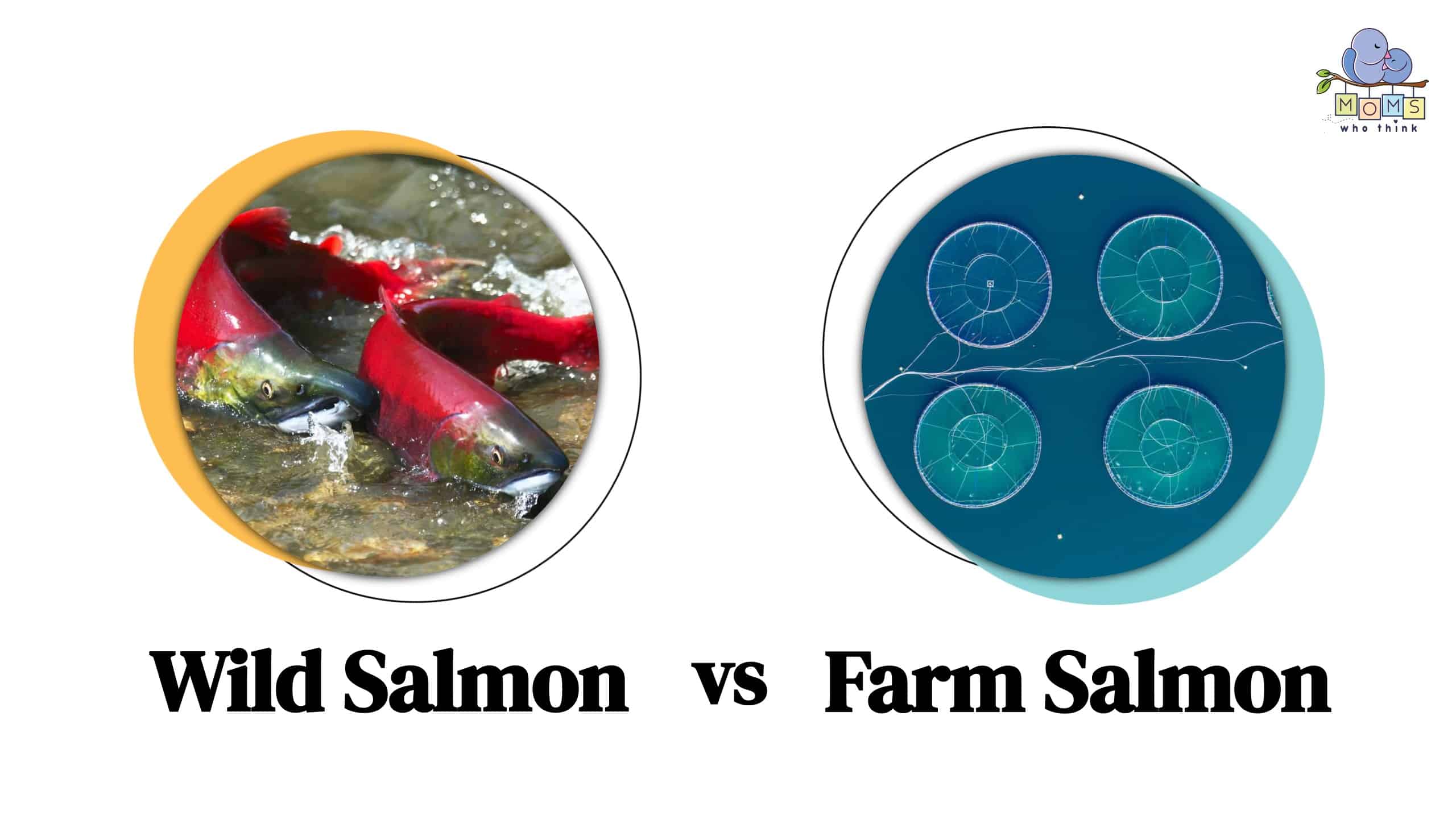Salmon is one of the healthiest fishes to eat. But did you know that there are seven species of salmon to choose from? Do you know what health benefits they offer?
When it comes to wild vs. farmed salmon, unique differences make them stand out. They are not only abundantly healthy for you, but they also have a unique origin. For instance, wild salmon is found in rivers, oceans, and lakes. Farmed salmon, however, is bred. This means that they are given a precise diet to grow larger. Their environment is much different than wild salmon. These are just some of the unique differences when it comes to wild vs. farmed salmon.
They also offer a variety of cooking options that help you get the nutritional value you're looking for. Additionally, you'll discover the health benefits that accompany these kinds of fish and what they can do for your overall health.
In this article, we will look at the other differences that separate these kinds of fish regarding nutritional value, their history, and the different meals you can make with them. You'll see how these kinds of fish, while both are salmon, are completely different in how they are grown.
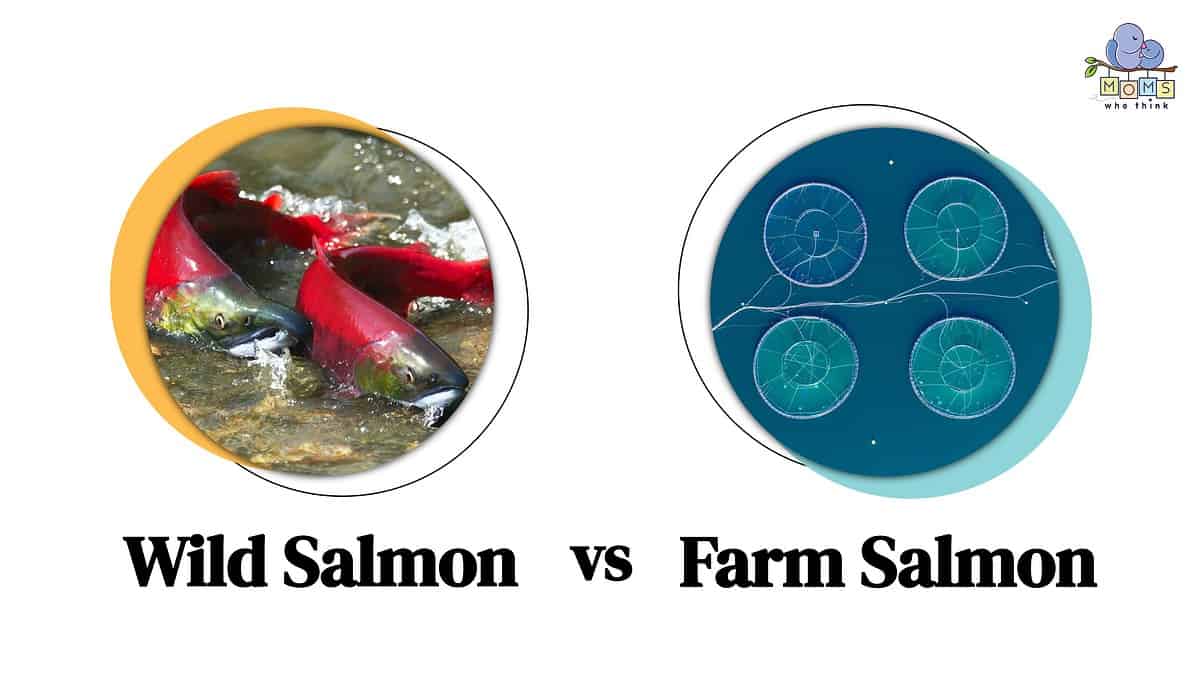
©
The Origin and Nutritional Differences Between Wild Salmon vs. Farmed Salmon
While wild salmon can be found in rivers, oceans, and lakes, it's much harder to catch. Most people fish for them with nets or traps. Another thing that makes wild salmon more unique is that they create their diet. They are not given anything compared to farmed salmon.
Farmed salmon are often grown in enclosed environments like tanks. It's designed this way because farmed salmon have the sole purpose of being eaten. However, because they are intentionally grown this way, they often have more PCBs, which are polychlorinated biphenyls. This is considered a type of persistent organic pollutant. Farmed salmon often have concerns with harmful contaminants because of how they are grown and bred. While it doesn't take away all of the nutritional value of the fish, it does mitigate the full nutritional value it has compared to wild salmon.
Wild salmon has fewer calories and fat content compared to farmed salmon. This is partly because farmed salmon are given more consumption in their diet. Farmed salmon are sold in grocery stores, which is why they are made to be more significant because they are more valuable when they are bigger.
Farmed salmon also has more omega-3 fatty acids and more saturated fat content. However, both fish are loaded with nutrients. Each has omega-3 fatty acids that help with immune support, cellular function, and inflammatory responses. Each fish also has the nutrients to help lower blood pressure and optimize brain function.
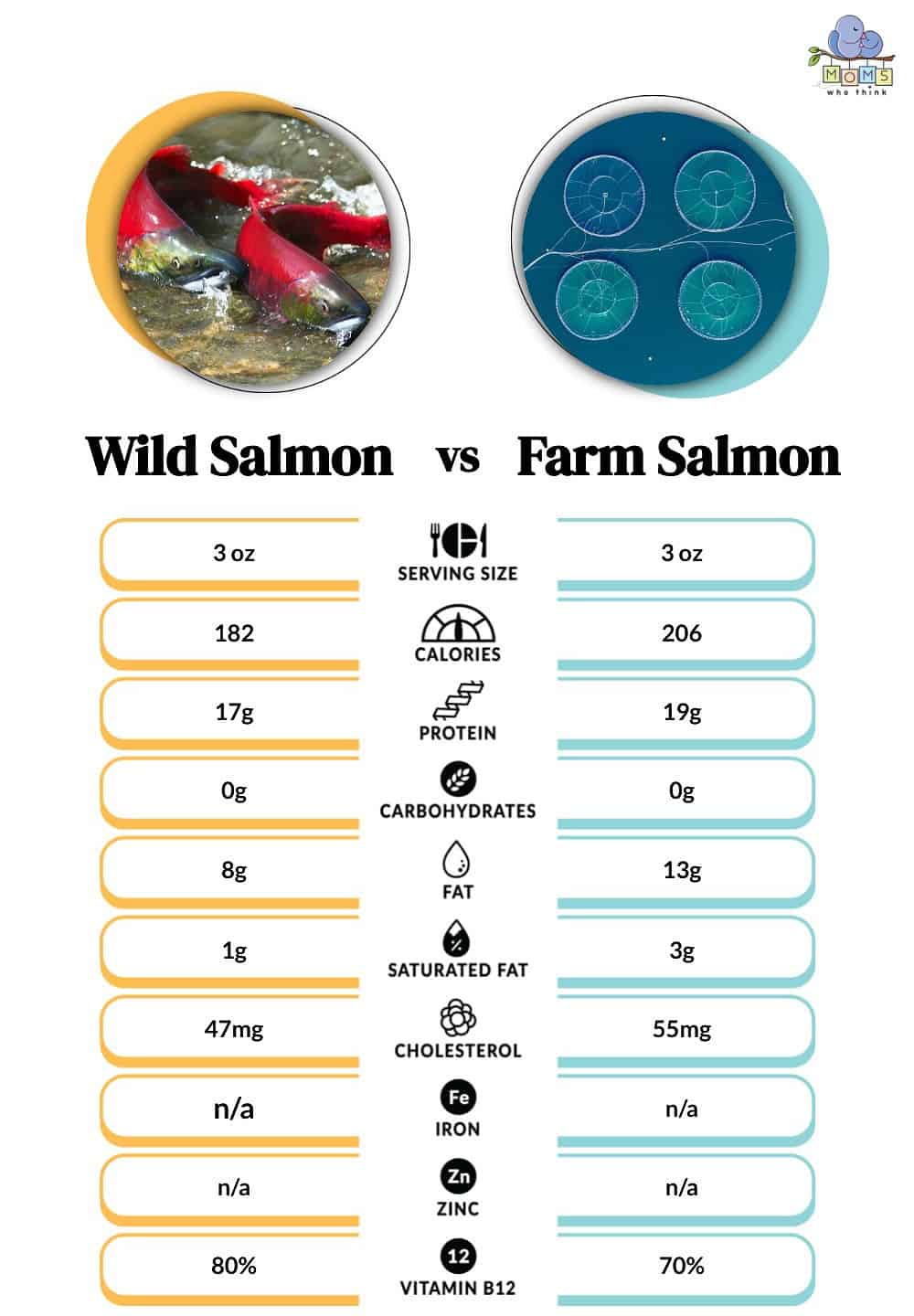
©
Are There Different Meals You Can Cook With Each One?
While you can cook a variety of meals with either fish, farmed and wild salmon are often cooked the same way. You can bake, barbeque, and even grill chicken. It depends on your taste and how you like to cook salmon.
For example, you may look to cook with wild salmon more because it offers additional health benefits. However, you can still use the same recipes with farmed salmon if you have wild salmon readily available to you.
Here are some of the most popular meals you can cook with either fish.
- Lemon butter pasta with salmon
- Coconut rice with salmon
- Sautéed garlic green beans with salmon
- Lemon kale salad with salmon
- Mashed red potatoes with salmon
- Cacioe pepe with salmon
- Roasted brussels sprouts salad with salmon
- Cilantro lime rice with salmon
Each of these meals offers a variety of ways to cook wild or farmed salmon. They can either be a meal in themselves or be a great complement to other dishes. Depending on how you like fish and the nutritional value you want, these meals offer plenty of options that allow you to accomplish both goals.
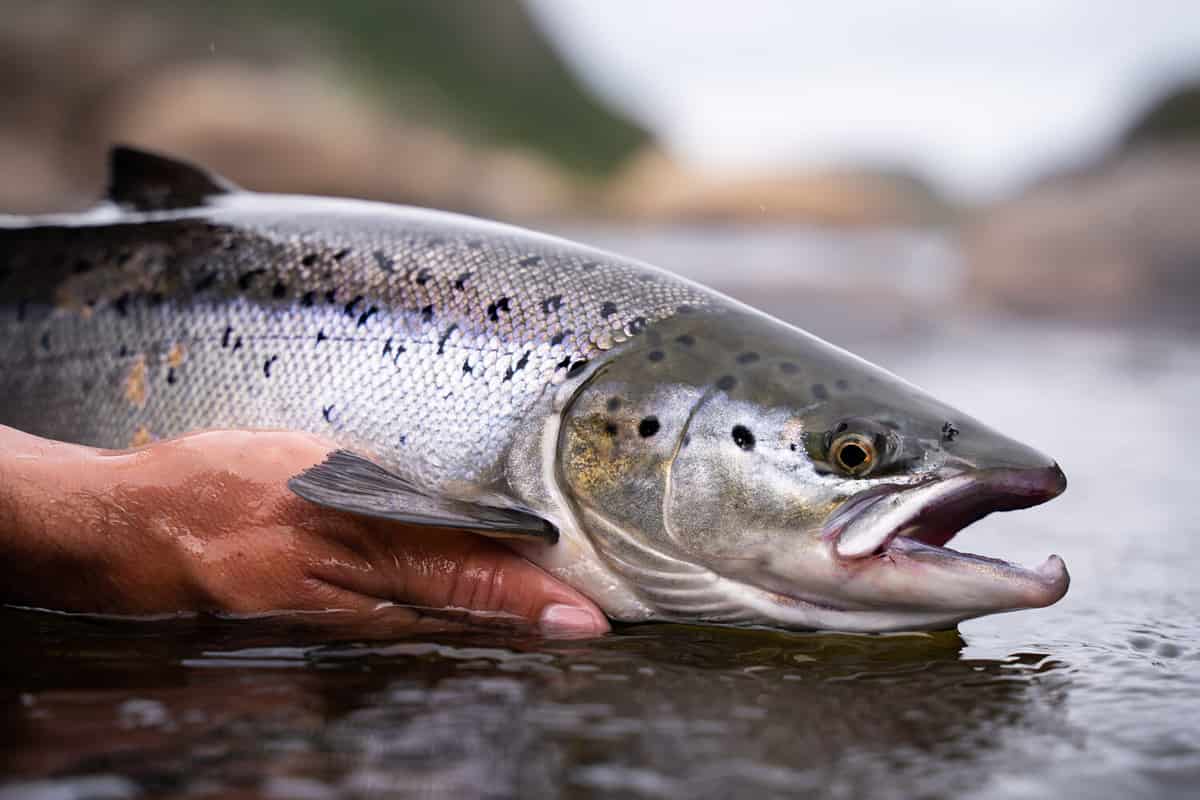
©Ilya Marchenko/Shutterstock.com
What's The Better Choice to Eat?
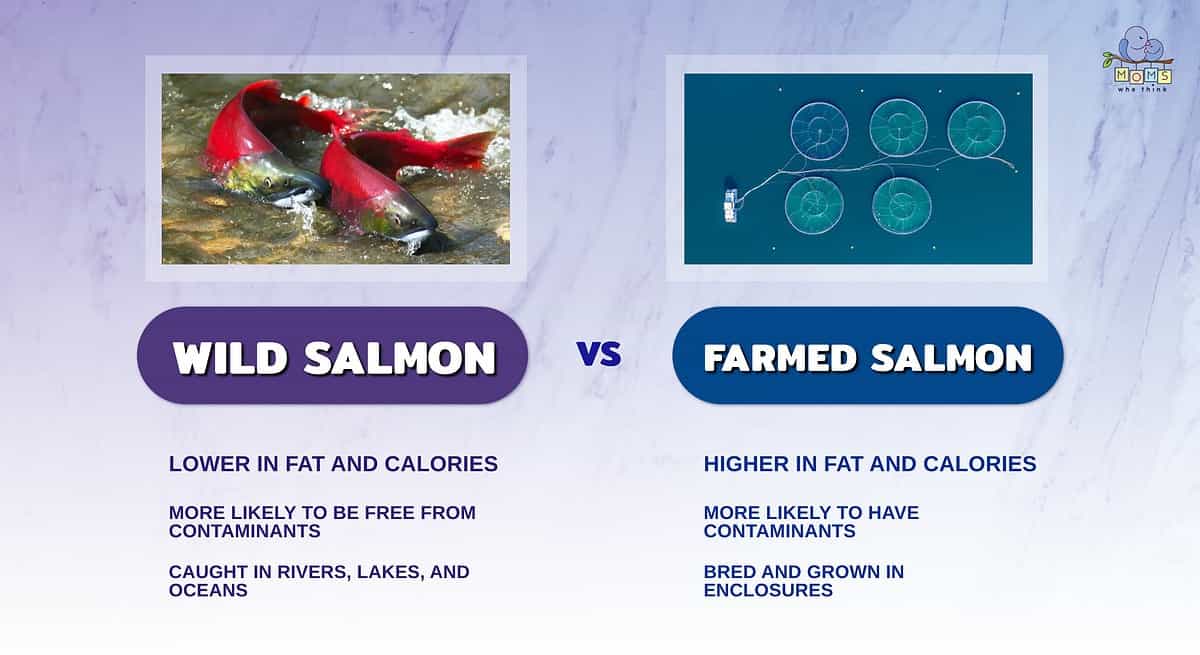
- Wild salmon doesn't have as many calories or as much fat as farmed salmon, which might make it a better choice for some.
- Due to the nature of its production, farmed salmon tends to have more contaminants than wild salmon.
- Wild salmon can be found in a variety of wild water bodies, while farmed salmon is always grown in enclosures.
Wild or farmed salmon both offer healthy meal options. They offer exceptional nutritional value. While they have different origins, it shows how other salmon are from species to species. Ultimately, there's no wrong choice on what fish to eat, but you'll discover that farmed fish is easier to obtain and consume because it's abundant in stores, while wild salmon is rarer to find because you have to catch it. Either way, both fish offer divine tastes.
An Amazing Salmon Recipe to Try
PrintOrange Rosemary Poached Salmon
Ingredients
1 cup orange juice
1 cup vegetable broth
½ cup fresh parsley leaves
3 tablespoons butter
6 garlic cloves, pressed
2 (5-inch) sprigs fresh rosemary
1 navel orange, sliced
4 (6 ounce) skinless salmon fillets (½ to ¾ inch thick)
1 teaspoon salt
2 teaspoons orange zest
½ teaspoon freshly ground black pepper
¼ teaspoon ground red pepper
Instructions
1. Place first 7 ingredients in a 5-quart oval slow cooker. Cover and cook on high for 2 hours.
2. Meanwhile, sprinkle salmon with salt, orange zest, and peppers. Cover and chill.
3. Place salmon in liquid in slow cooker. Cover and cook 30 minutes more or until desired degree of doneness. Carefully transfer salmon to a serving platter using a large spatula. Serve over orzo.
